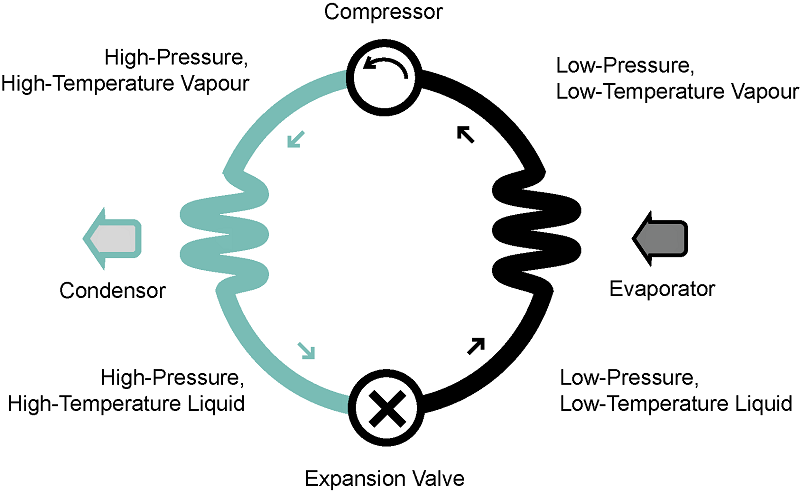Market Snapshot: Growing heat pump adoption – how does the technology work?
Release date: 2019-04-17
In a previous Market Snapshot, the NEB showed that heat pumps installations on homes and businesses increased from 400 000 in 2000 to 700 000 in 2016. Heat pumps are heating-and-cooling systems that work by transferring heat from one place to another. Currently, heat pumps are more expensive to purchaseFootnote 1 than other heating systemsFootnote 2, which is why heat pumps are not yet widely adopted.Footnote 3 For example, Efficiency Nova Scotia estimates that the price of a new central air-sourced heat pump system would cost close to $14 000, while a baseboard heating system would be $2 300.Footnote 4 In 2016, there were 767 000 heat pumps in Canada; most of them in Ontario and Quebec.
Figure 1: Heat Pumps Installed in Canada
Source and Description
Source: Natural Resources Canada, Comprehensive Energy Use Database - Table 21
Description: This chart shows the number of heat pumps installed in residential dwellings from 2000 to 2016. This number has been steadily increasing from a Canadian total of 415 000 in 2000 to 767 000 in 2016. The provinces who have the largest numbers of heat pumps are Ontario and Quebec. There are also heat pumps in the other provinces but in smaller numbers.
Heat pumps come in two main types. Air sourced heat pumps transfer heat between two air bodies, for example, inside and outside a home. Ground sourced heat pumps transfer heat between the air and the ground. Figure 2 shows that heat pumps have four main components: an evaporator, a compressor, a condenser, and an expansion valve. A heat pump heats a home by using refrigerant to absorb heat at the evaporator, located outside, and to move heat to the condenser and expansion valve, located inside.
Figure 2: Heat Pump Diagram

Source and Description
Source: Natural Resources CanadaFootnote 5
Description: Diagram of a heat pump, which is transferring heat from one environment to another. The small arrows indicate which way refrigerant is flowing in the system.
 Heat pump components and what they do
Heat pump components and what they do
An evaporator: cool, liquid refrigerant absorbs heat from the evaporator’s surroundings and boils into a gas.
A compressor: the gaseous refrigerant is pressurized, raising its temperature.
A condenser: the hot, pressurized gas expels much of its heat in a different area than the evaporator. This heat loss causes the gas to condense into a liquid.
An expansion valve: the warm, liquid refrigerant is depressurized and some boils into a gas, which absorbs heat from the remaining liquid. The gas then expels its heat to its surroundings and cools into a liquid ready to enter the evaporator again.
Some heat pumps are reversible, meaning these heat pumps can heat or cool a home by reversing the direction of refrigerant flow.
Heat pumps require electricity because of their compressors. However, they are far more efficient than other types of heating that use electricity, like baseboard heaters.Footnote 6,Footnote 7 Baseboard heaters convert electricity to heat, while heat pumps only use electricity to move heat from one location to another, and therefore can use 50% less energy. This means heat pumps could be a key technology to help Canada reduce its GHG emissions.
One drawback to heat pumps is that they become less efficient at heating when it is very cold outside. Therefore, cold-climate, air-sourced heat pumps have been developed for places like Canada. These heat pumps typically cost more, but are more efficient at lower temperatures.Footnote 8
- Date modified:
